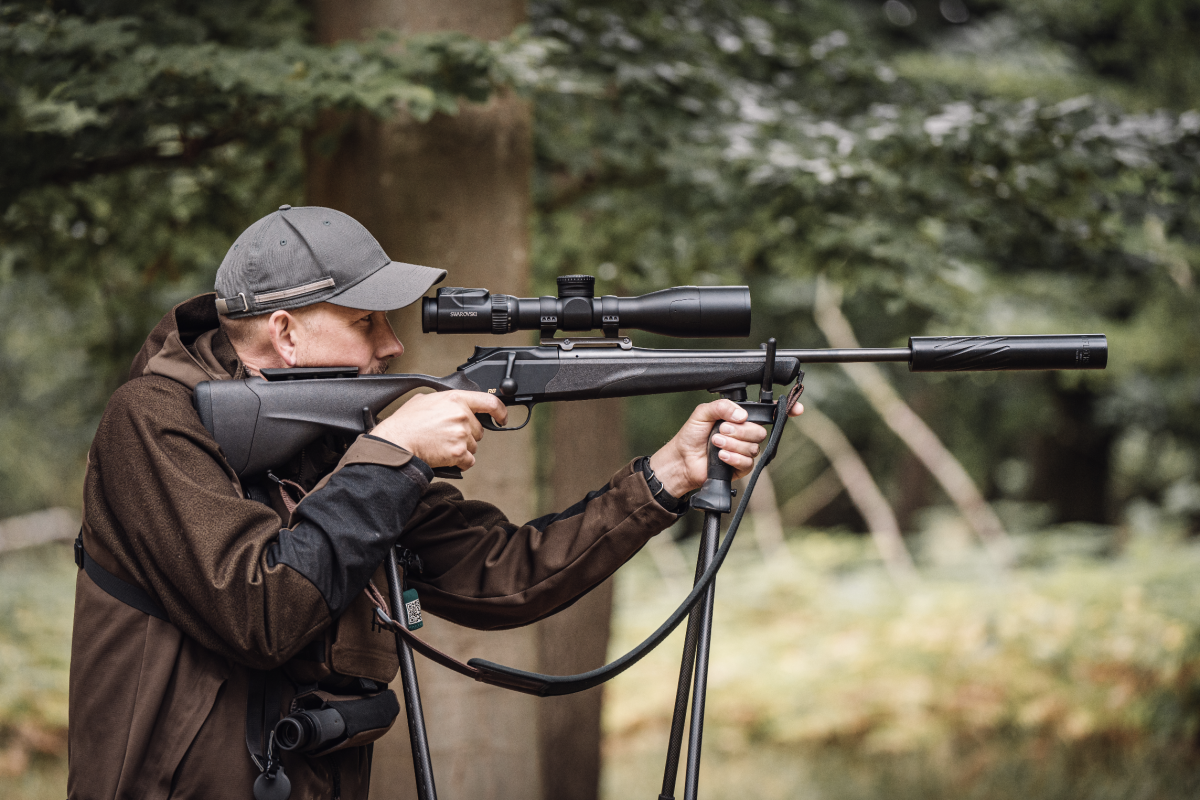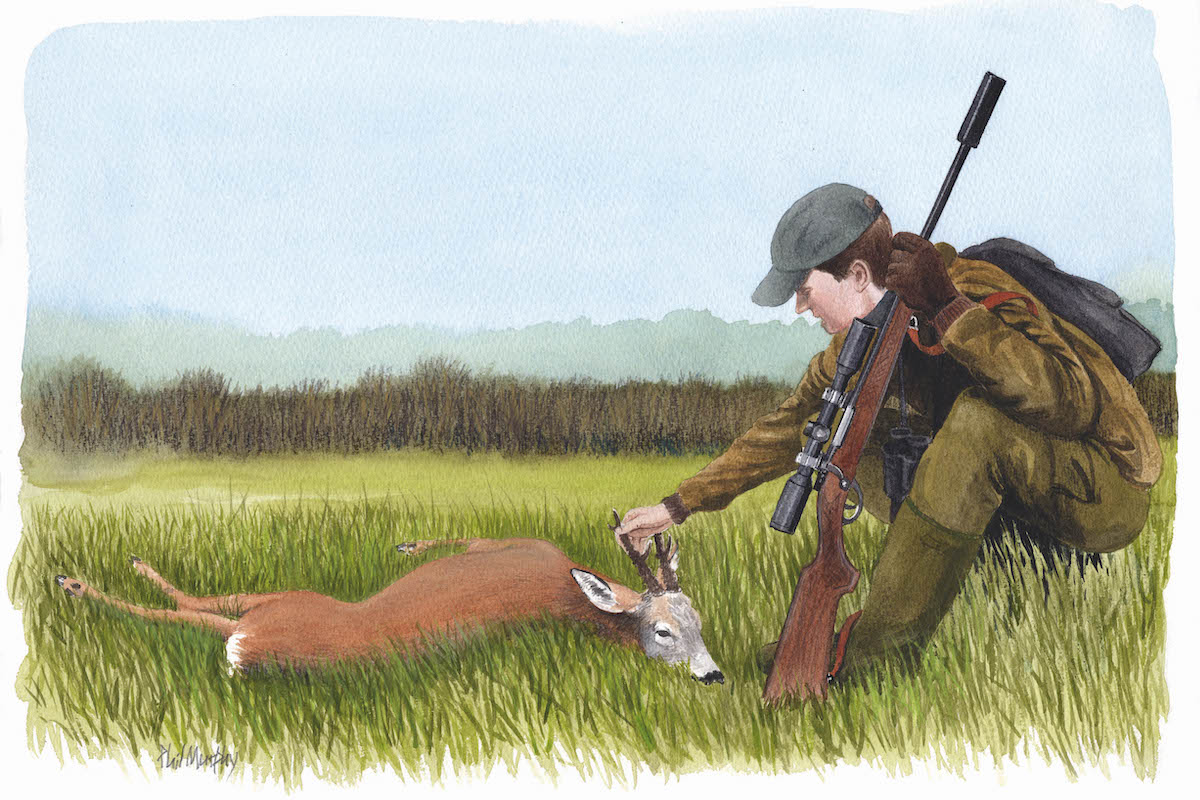The heritage of red deer in East Anglia
Historic red deer are part of East Anglian folklore, but with growing pressure to reduce numbers Chris Rogers is mindful of their heritage

Deer have never been under so much pressure anywhere in the UK, but particularly now in England the spotlight is on them, and all but the most stubborn of landowners are under pressure to shoot more than they ever have. Two species in East Anglia that this applies to the most are fallow and red, not only for the habitat damage they cause but, more relevant to farmers, the crop damage that can run into thousands of pounds.
For the Breckland red deer this is a serious issue and one that the herd will have to cope with, probably to their detriment for the foreseeable future. It’s a famous population of deer known for its record body size and antler production that’s regularly in the top 10 of the UK CIC Trophy Evaluation Board’s records.
Red deer have been recorded in the region for thousands of years, although it is likely that the population fluctuated greatly as they were hunted and used by our ancestors. The Neolithic flint mine of Grimes Graves is littered with antlers used as picks to undermine chalk, releasing huge lumps of jet-black flint deep below the ground. In addition to local antlers it is believed European red antlers were also used to meet the demand for flint, which was traded around the British Isles and abroad.
Evolution of parks
Records of wild animals are patchy throughout history, but the next concrete reference to red deer was at Euston when the then owner Lord Arlington, emparked 2,000 acres in 1671 to create a grand deer park.
One thousand red and fallow deer were kept in the park that linked Euston Hall with a 500-acre woodland that was known to have been a medieval deer park. The boundary earth bank on which a paling fence would have been erected is still visible today. Hunting with horses and hounds was documented throughout its lifespan before it was disparked around 1830, as many historic parks were to make way for livestock farming. It is likely the remaining deer were rounded up and sold live, though a number of red and fallow must have escaped over the years and formed a wild population.
With the demise of the deer parks fox hunting took off and deer hounds were bred smaller and leaner to create the modern foxhound we have today.
Some areas of the country still clung on to their deer hunting heritage into the 1900s, with East Anglia being one of them. The Norwich Stag Hounds were one of the principle packs in the region, although some 25 packs hunted red deer over a period of 180 years.
Most packs hunted single animals released in the morning and caught up at the end of the hunt. Very rarely were the deer killed, although occasionally they were never retrieved and lived wild in the area with landowners reporting individuals and small groups of red with calves having been pregnant when hunted.

On the edge of the wood on the Euston Estate, where a deer park was created in the 1670s
Increasing numbers
From the 1950s, separate groups of red deer started to be observed and recorded in various locations centred around Thetford Forest. During the next 20 years, numbers ebbed and flowed as legal culling and poaching had an effect on numbers. In occasional years, the Forestry Commission (FC) in Thetford stopped culling to try to conserve the deer that were being heavily poached and, as the initial forest plantings from the Commission’s creation were felled, red deer dispersed around the surrounding area.
FC rangers under the direction of head ranger, Rex Witter, were actively sent round landowners’ fields to scare the deer back into the forest, where they had greater protection from poaching. During the 1980s, with the clear-felled areas regrowing, the herd significantly increased and throughout the 1990s culling pressure by the FC and private landowners increased as damage to agriculture and habitat was becoming clear.

A red hind with calf and a muntjac in the fields of the Euston Estate in Suffolk, where pressure to control numbers is high due to costly crop damage
In 2007, the numbers were estimated to be around 800. Ever since, numbers have remained at a high level across the Breckland area, with two noticeable dips in population over the 18 years I’ve been involved with the Breckland Deer Group, which meets twice a year to discuss numbers and policy of all the species present on their ground.
In 2021, all parties reported a severe spike in numbers, but it is always unclear whether the peaks and troughs are a result of culling or, as most suspect, general herd movement in, out and around the area following heavy culling pressure.
With the male season opening on 1 August and the grazing pressure on crops even more acute due to the drought conditions this year, I headed out early for a yearling stag, otherwise known as a ‘spiker’ due to the stag’s first set of antlers usually being two single spikes. Having said that the stags in East Anglia are so good that most spikers actually carry multi-point spikes in their first year, which is a primary observation when deciding which individual to shoot.
Leaving the house at 5am, the sky was starting to lighten, but it was nice to see it was still dark as for the last few months at that hour it’s been full daylight. Driving across the estate, I stopped to check the wind; there was little of it and it felt warm at 17°C. After 20 minutes, I was parked up inside our big wood and wandering quietly out towards the east side, where several fields of maize for the estate’s biodigester are located. My plan was to sneak down the edge of the wood while looking over the maize on my way to a field of sugar beet, which was struggling to grow due to the conditions and the repeated efforts of the deer night after night. I hadn’t gone more than 200m down the edge of the wood when I heard a rustle in the maize.

naware they are being watched, a small group of hinds and calves move between fields, protected by the high maize crop
A small group of hinds and calves moved through the maize, but they were unaware of my presence and stopped on an old hedgerow between fields. The calves are well grown, bigger than roe, akin to a fallow in height. I waited for a few minutes as the hinds looked around and the calves started nudging each other in a playful way. They moved off into the next field of maize and disappeared in the tall crop. I pushed on as quickly as I could, hoping that some red would still be on the beet.
Reaching a corner of the wood, I edged round using my thermal, as it’s quicker to scan with that than binos at first light, to look for any deer still out, but there were none visible. Rounding the corner, I had one field of maize to pass before I was on to the sugar beet and could view the whole field, but my attention was caught by what looked like four grey sticks moving through the top of the maize.
Towards the field edge, the height of the maize drops off and, 30m away, two spikers’ heads came into view. As young stags go they were both fairly average: one single spiker and the other a three-pointer with one of his antlers having a fork at the top.

The thermal works better than binoculars in low light conditions as Chris searches for a ‘spiker’
Chance of a second
As is often the case at such close quarters, one of them sensed me and turned towards me with his best hard stare. The .30-06 was already on the sticks and, having made the decision to take the lesser of the two, the chosen beast fell to the ground instantly. The second stag didn’t take any chances, turning and fleeing back into the maize. Having bled the beast, it was only 5.45am and the sun wasn’t too strong, so I continued stalking on the woodland rides hoping to find a second stag.
I passed under some oak trees where a group of peahens with their chicks flew off, but other than that, the wood had gone quiet. Our big wood is divided into large blocks and the red that had come in from the fields at first light were safely tucked up for the day. With dried-up leaves falling from the canopy, there was little point trying to creep into the areas in the hope of taking another.
Retrieving the shot deer with a tipping trailer fitted with a winch was fairly easy. Hanging in the larder, the carcass weighed 68kg and it is destined for a high-end butcher. With high numbers in the area, it could be a busy winter on the reds. Time will tell how the Breckland herd will fare with the challenges facing them and the landowners they impact. I just hope it’s remembered that these deer are native, magnificent and that, while culling is essential, they are treated with the respect they deserve










